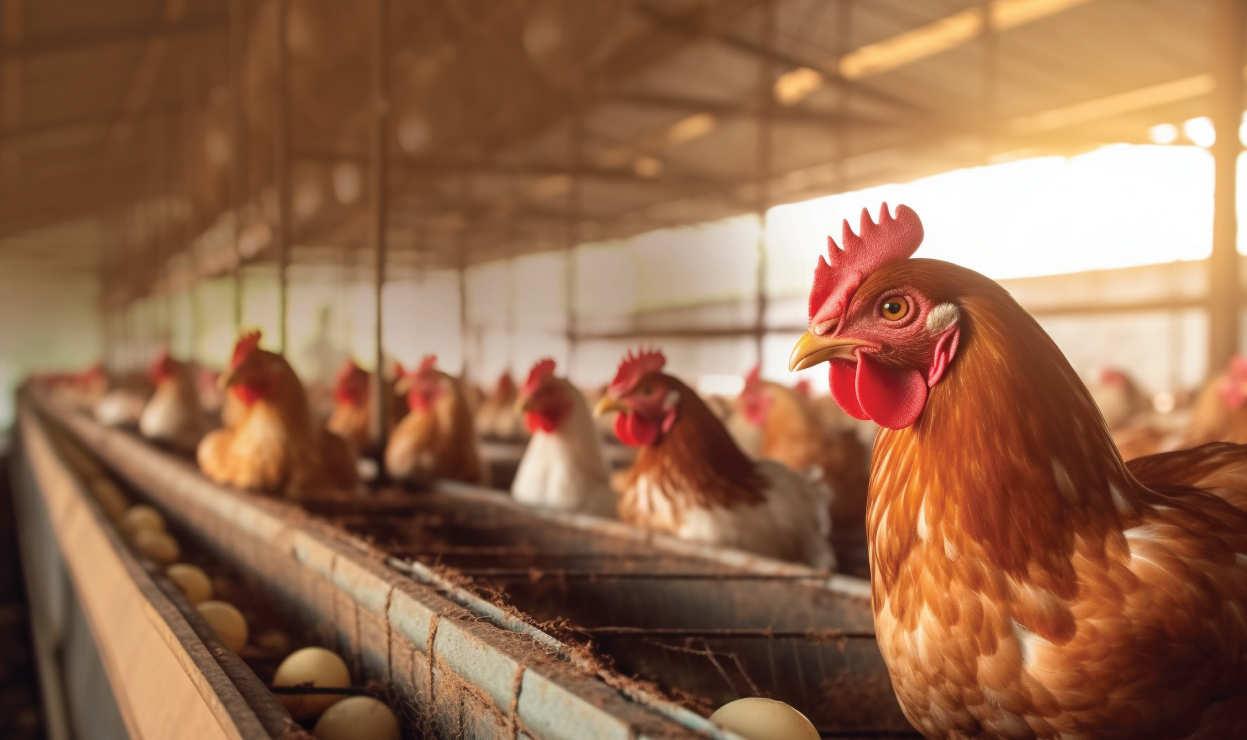
3 minute read
Sustainable approach to poultry production
POULTRY IS AN integral part of our daily consumption needs. In that context, it is important to be aware of what goes into the complex process of its production and how it works. The presence of spoilage and pathogenic microorganisms cannot be avoided throughout the process. To top that, crosscontamination is also inevitable. To tackle such challenges, it is important to analyse and take a systematic approach to combat the microbes involved. Ideal measures that should be taken into consideration include cleaning and disinfection procedures, or chemicals suitable to remove the type of dirt present in each area, to name a few.
Organic dirt is an important factor to consider in the maintenance of hygiene. Organic dirt types depend on which part of the slaughterhouse it belongs to. For instance, feathers and faeces are prevalent while the birds are unloaded, shackled, stunned, scalded and plucked.
Blood becomes the predominant source of contamination while killing, and there are special practices to remove them.
During the evisceration stage, fat, proteins and organic remains from the gut, along with microorganisms from the intestines needs handling. When hens are slaughtered, the removal of fatty residues can be a real challenge. Hooks from the chilling tunnel will be physically draining, not just for their large number, but because it is difficult to reach them. although some surfaces with thick layers of resistant dirt may require manually scrubbing with scouring pads or nonabrasive brushes.
3. Next, it is important to rinse to ensure that all leftover dirt or detergent is removed.
4. One must follow the recommended dosage and contact time while spraying disinfectant on the surfaces.
Ways to clean and disinfect poultry spaces
To fight food hazards that may rise from poultry, the fundamentals of a cleaning and disinfection procedure must have these following steps:
1. The largest particles can be dealt with effective water pressure and mopping. This will help in keeping the walls, equipment and floors look clean.
2. Cleaning detergents or detergentdisinfectants can work wonders on food establishments. These do an exceptional job in dislodging any obstinate dirt particles such as grease, and leave them in suspension or emulsify them. Detergents are dissolved in water and should be used at the correct recommended manufacturer concentration and proper temperature. They can be applied by spraying, immersion or using foam-spraying equipment,
5. Finally, food contact surfaces require thorough rinsing.
Cleaning in place
One of the safe and easy ways to effectively clean poultry equipment is called Cleaning in place (CIP). CIP is comprised of chemicals, heat and water, allowing to flush unwanted particles and unsanitary substances from equipment without the need for disassembling. The main components that make up a CIP system are designs, cleaning agents and cycles.
The CIP system works in three kinds of set up – single pass, recirculating (multi-use), and re-use. Single pass is meant for onetime use and is best-suited for heavy loads. This is because the cleaning of heavy loads will require covering a huge amount of contaminants, leaving the medium unfit for reuse. Recirculating, on the other hand, allows reusing and is best suited for light loads. The reusing method can be applied on future cleanings. meat, proper cutting is what makes a lot of difference, for customers as well as retailers. While cutting the meat to get the desired quantity, cutters are bound to get stained from leftover pieces, which requires frequent cleaning. comprise the final step ahead of distribution. In such critical situations, CIP is the most relevant approach to double check and avoid any possible instances for cross contamination.

Once the design has been selected, it is time to choose the cleaning agent. These involve multiple options of chemicals that can be chosen in terms of respective needs. Caustic soda, phosphoic/nitric acids, and sodium hypochlorite are the usual cleaning agents.
CIP is driven by a series of cycles, whereby an initial drain run is required to flush out particles, pre-rinse (<80 degrees F) to get rid of loose soil, applying the chosen solution to remove soil or debris from equipment, post rinse to wipe clean the remaining dirt, and finally an optional sanitising step.

Equipment that require CIP approach
Some of the key pieces of food processing equipment that should be cleaned-in-place are:
Cutting machines - When it comes to
Conveyor systems - Conveyors define the food processing line; therefore, it is of utmost importance to keep conveyors and conveyor belts clean to avoid cross-contamination hazards. To minimise such risks, CIP systems can be integrated in a variety of ways.
Industrial packaging equipment - Let alone their indispensable position, these machines write the fate of a product as they
CIP system is a cheap, simple and timesaving approach as they eliminate the complicated steps of dismantling and washing each piece of equipment individually. It is also a sustainable choice as it allows reusing the solutions, thus reducing cost as well as unnecessary waste. CIP systems also give maximum satisfaction as the strong chemicals used in cleaning makes sure to wipe out all kinds of standing dirt. h
Using AI technology to monitor poultry houses helps detect red mites in their early stages of development, thereby enabling quick implementa tion of required treatment measures.










